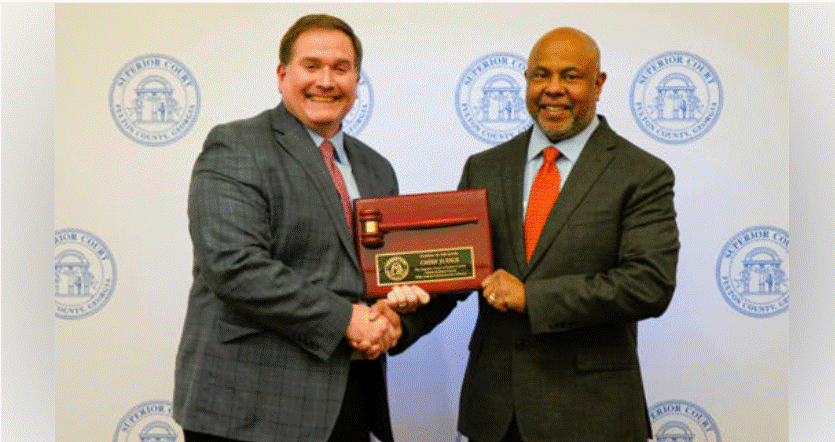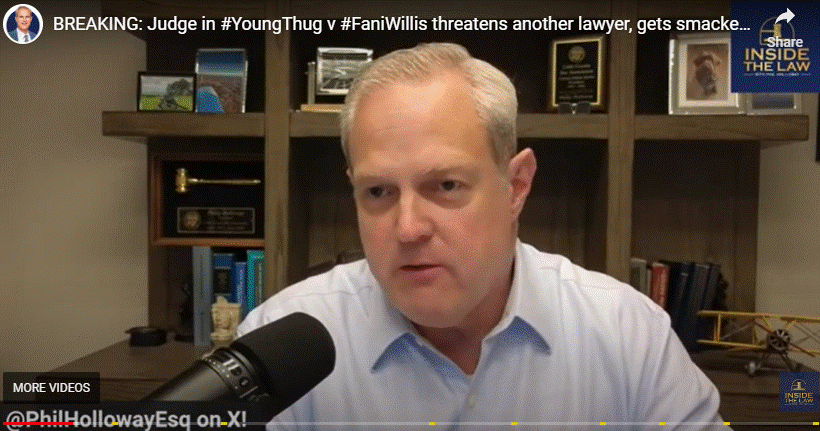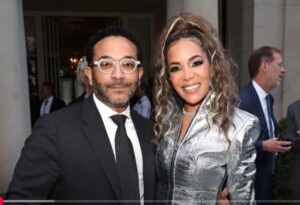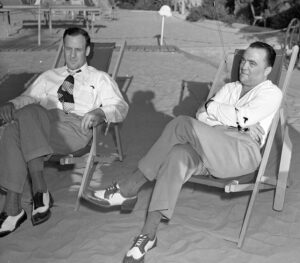ASHLEIGH EXPLAINS GLANVILLE’s MISTAKES

By SNN.BZ STAFF
A significant legal incident burst open in an Atlanta, Georgia court, involving a judge and an attorney. The attorney, Brian Steel was taken into custody for contempt of court when the judge in the case, Ural Glanville succumbed to embarrassment for having been found out to have seen a sworn witness in “ex parte” fashion which is legally inappropriate and serves to qualify the case for a mistrial.
The situation arose when Brian Steel legitimately accused Judge Ural Glanville and prosecutors (including Fani Willis) of holding an improper ‘ex parte’ meeting with a key witness, Kenneth “Lil Woody” Copeland, without the defense’s knowledge. Steel wasn’t the only person in the court house to notice that the key witness was at all times surrounded by armed law enforcement personnel ensuring that he couldn’t speak to anyone. Steel described the court personnel’s handling of the key witness as having him “on a tether.”
The judge, Ural Glanville ordered the attorney, Brian Steel, to serve time in jail for no more than 20 days for this contempt. Embarrassingly, the judge was WRONG! So wrong in fact that the State of Georgia Supreme Court had to step in (yes, against the judge’s wishes).
This case highlights the complexities of legal proceedings and the sensitive nature of contempt charges. This is especially true when a judge that is hearing a case has forgotten whether criminal or civil contempt is applicable to the case at hand. The judge’s mistake is most likely because Glanville lost his temper in such an extremely public setting.
Criminal contempt refers to actions that obstruct the administration of justice or bring the court into disrespect, while civil contempt often involves failure to comply with court orders in a way that benefits someone else. The judge did not know the difference between the two and kept trying to use the worst case scenario of both aspects of contempt. YouTube videos in the hundreds show Glanville losing his composure, then his temper. The entire ordeal was quite sad and embarrassing for him and anyone that watches the videos.

Brian Steel filed a motion to recuse Glanville from the YSL trial on Monday.© Superior Court of Fulton County
BRIAN STEEL’S MOTION TO RECUSE JUDGE URAL GLANVILLE
DEAMONTE (WOODY) KENDRICK’s MOTION TO RECUSE JUDGE URAL GLANVILLE
CLICK PHIL’s IMAGE BELOW TO PROCEED TO VIDEO

The distinction between the two forms of contempt can have significant implications for the legal process and the individuals involved. It was clear to everyone present in the court and the millions of people watching the trial on multiple televised streams, that the judge was clearly in crisis.
Brian Steel’s arrest has sparked discussions and appeals, to the point where the Georgia Supreme Court stepped in to stop the judge’s tantrum. What was worse was that rather than show any form of consideration and recognizing his mistake, excusing himself for the error and moving on – the judge doubled down and sent the attorney that “outed him” to jail.
The Georgia Supreme Court granted an emergency motion for bond, allowing Steel to remain out of custody until his appeal is resolved. There is no question that this case now has MISTRIAL written all over it. Not to mention the multitude of lawsuits this judge has invited upon himself.
The judge passed the bar when he first became a lawyer so at some time in the past, or at least on the day he took the bar exam, he did know the difference between civil and criminal contempt.
This incident underscores the importance of understanding legal procedures and the potential consequences of courtroom interactions.
It did not escape legal scholars and members of the legal profession that if any witness in this case is meeting with Fani Willis and Ural Glanville and the other prosecutors from Fani Willis’ office says anything while he or she is in that ex parte meeeting, everything and anything that witness says is grounds for cross examination.
What Fani Willis and Ural Glanville have done is ruined this case in their fervor to just “wrap it up.” They have created an illegal circumstance by meeting with that hostile witness privately.
This case also highlights how a judge’s pride can upend a trial.



